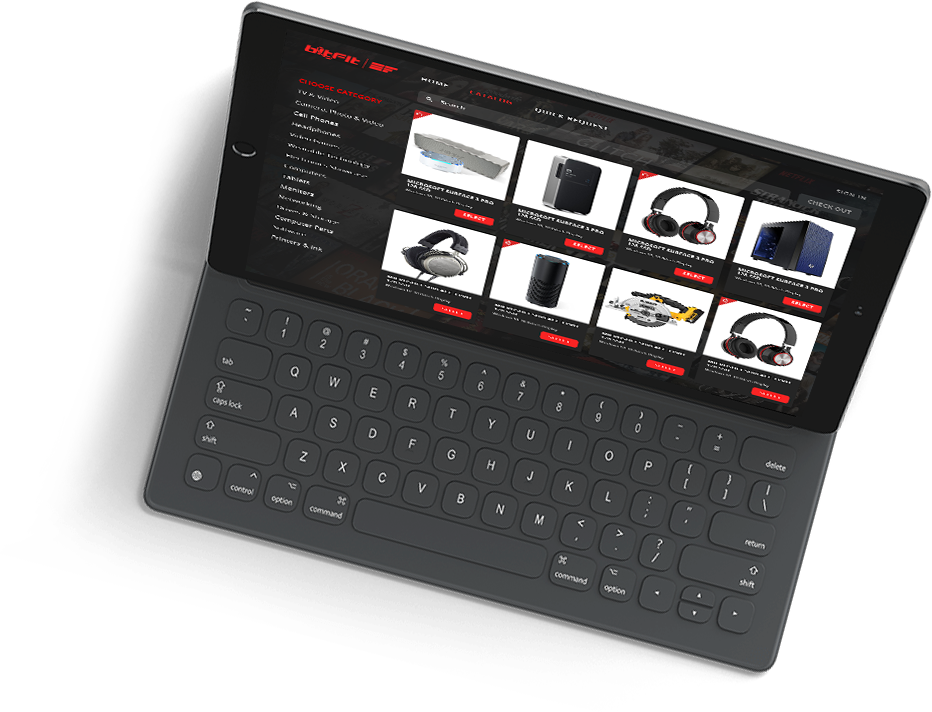
Effective asset control has become more crucial in today’s fast-paced and highly competitive business environment. According to a report by Deloitte, organizations can reduce operational costs by up to 20% through efficient asset management, underscoring the importance of having robust asset control mechanisms in place. But what exactly is asset control, and why should your business prioritize it? In this article, we will explore the fundamentals of asset control, its benefits, key elements involved, and how to implement successful asset control strategies in your organization.
Understanding Asset Control
What is Asset Control?
Asset control refers to the processes and systems used to monitor, manage, and optimize an organization’s assets. These assets range from physical items like machinery, vehicles, and equipment to intangible assets like intellectual property and digital licenses. Asset control ensures that all assets are accounted for, utilized efficiently, and maintained optimally. It differs from asset management, which is broader and encompasses asset strategic planning, procurement, and lifecycle management. In contrast, asset control focuses more on the operational aspects of monitoring and safeguarding assets.
Types of Assets Managed
- Tangible Assets: These include physical items that a business owns, such as machinery, vehicles, buildings, and office equipment. Tangible assets are often the backbone of an organization’s operations, and their management is critical for maintaining productivity.
- Intangible Assets: These are non-physical assets, including intellectual property, patents, trademarks, and goodwill. Though not visible, intangible assets often hold significant value and require careful management to protect a company’s competitive edge.
- Digital Assets: In the digital age, assets include digital files, software licenses, digital media, and databases. Proper digital assets management is essential to ensure data integrity, security, and compliance with legal requirements.
Why Asset Control is Essential
Risk Mitigation
One primary reason for implementing asset control is to mitigate risks associated with asset loss, theft, and mismanagement. Without proper asset control, organizations are vulnerable to losing track of valuable resources, leading to financial losses and operational disruptions. For example, a manufacturing company that fails to monitor its equipment usage might experience unexpected breakdowns, leading to costly downtime. Case studies have shown that businesses with poor asset control can suffer from inventory shrinkage, leading to significant financial losses.
Cost Efficiency
Asset control plays a vital role in optimizing asset use, thereby reducing operational costs. By keeping track of asset usage, maintenance schedules, and lifecycle stages, businesses can ensure that assets are used efficiently and are not replaced prematurely. For instance, an organization that regularly maintains its machinery according to manufacturer guidelines will likely experience fewer breakdowns and a longer lifespan for its equipment. This saves money on repairs and replacements and enhances overall productivity.
Compliance and Regulation
In many industries, strict regulations govern how assets should be managed, tracked, and reported. Failure to comply with these regulations can result in hefty fines, legal actions, and damage to a company’s reputation. Asset control ensures that organizations maintain accurate records of their assets, which is essential for regulatory compliance and audit readiness. For example, medical devices must be tracked meticulously in the healthcare industry to meet FDA requirements. Proper asset control systems can simplify compliance by providing real-time data and generating the necessary reports for regulatory bodies.
Key Elements of Effective Asset Control
Asset Tracking
Asset tracking is the cornerstone of asset control. It involves real-time monitoring of the location, condition, and usage of assets. Technologies such as RFID (Radio Frequency Identification), asset tagging, and GPS (Global Positioning System) are commonly used for this purpose. Real-time tracking provides accurate data on asset movements and usage patterns, enabling organizations to make informed asset allocation and maintenance decisions. For instance, RFID tags on warehouse inventory can help companies quickly locate items, reducing the time spent on inventory checks and improving order fulfillment speed.
Asset Lifecycle Management
Effective asset control also involves managing assets throughout their entire lifecycle, from acquisition to disposal. This process is known as asset lifecycle management. Understanding the lifecycle of assets allows organizations to plan for upgrades, replacements, and disposals cost-effectively. For example, a company might decide to sell off older equipment before its value depreciates too much, using the proceeds to invest in newer, more efficient machinery. By managing the lifecycle of assets, businesses can maximize their return on investment (ROI) and avoid unnecessary expenses.
Data Management and Reporting
Accurate data is the foundation of asset control. Organizations must maintain up-to-date records of all assets, including purchase dates, maintenance history, and current condition. Modern asset control systems often include software that automates data collection and reporting, making tracking assets and generating reports easier. These reports are essential for decision-making, as they provide insights into asset performance, utilization rates, and potential areas for cost savings. Additionally, robust data management practices are crucial for ensuring compliance with regulatory requirements and facilitating audits.
Implementing Asset Control Strategies
Developing an Asset Control Plan
To implement effective asset control, organizations need a comprehensive asset control plan. This plan should outline the processes and procedures for tracking, maintaining, and managing assets. Key steps in developing an asset control plan include conducting an asset inventory, identifying critical assets, defining roles and responsibilities, and establishing asset maintenance and disposal protocols. Involving stakeholders from various departments is crucial to ensure the plan is comprehensive and aligns with the organization’s overall goals. Clear communication and documentation are also essential to ensure all employees understand and adhere to the asset control procedures.
Choosing the Right Tools and Software
Selecting the right tools and software is critical for effective asset control. Numerous asset control software solutions are available, each offering different features and capabilities. When choosing a solution, organizations should consider factors such as ease of use, scalability, integration with existing systems, and the ability to generate detailed reports. Popular asset control software options include bitFit, ServiceNow, and Asset Panda. The right software will enable organizations to automate asset tracking, streamline data management, and enhance decision-making through real-time insights.
Training and Compliance
Even the most advanced asset control systems are only as effective as the people using them. Therefore, investing in employee training is crucial to ensure that your team is proficient in using the tools and software that support asset control. This includes understanding asset tracking procedures, proper data entry protocols, and compliance requirements. Regular training sessions and refresher courses help maintain a high level of competence and keep employees up-to-date with the latest practices and technologies in asset management.
Introducing bitFit AI: Enhancing Training and Compliance
To further streamline training and ensure consistent compliance, integrating AI-driven solutions like bitFit AI can be a game-changer. bitFit AI is designed to assist users with both initial training and ongoing education related to the bitFit system and broader asset management practices within the organization. Here’s how bitFit AI enhances training and compliance:
- On-Demand Training and Support: bitFit AI provides immediate answers to user queries, offering guidance on how to navigate the bitFit system and manage assets effectively. This on-demand support ensures that employees can quickly resolve issues or questions without interrupting their workflow, leading to more efficient use of the asset control system.
- Monitoring for Consistency: One of the unique features of bitFit AI is its ability to monitor user activity within the asset management system. It actively checks for inconsistencies in asset management practices, such as incorrect data entry or deviations from established protocols. When inconsistencies are detected, bitFit AI can provide real-time feedback and suggest corrective actions, helping users stay compliant with company policies and best practices.
- Personalized Training Recommendations: Based on its monitoring, bitFit AI can identify areas where individual users or teams may need additional training. It then offers personalized training suggestions, ensuring that employees continuously improve their asset management skills. This targeted approach to training helps address specific weaknesses and reinforces best practices, leading to more consistent and accurate asset control.
- Automated Reporting on Data Fixes: In addition to training, bitFit AI plays a crucial role in maintaining data integrity. When data inconsistencies are detected, bitFit AI not only suggests fixes but also generates reports on the necessary corrections. These reports can be used by management to track common issues, measure training effectiveness, and ensure that the organization’s asset data remains accurate and reliable.
Integrating bitFit AI into your asset control strategy can significantly enhance the training process and overall compliance. This not only ensures that your employees are well-equipped to manage assets but also that your organization maintains the highest standards of accuracy and efficiency in asset control.
Challenges in Asset Control
Common Challenges
Implementing and maintaining effective asset control can be challenging. Common challenges include data inaccuracies, lack of real-time tracking, resistance to change, and the complexity of managing a large number of assets across multiple locations. Data inaccuracies can arise from manual data entry errors, outdated records, or inconsistencies between different systems. Lack of real-time tracking can lead to delays in locating assets, resulting in operational inefficiencies. Resistance to change is another significant hurdle, as employees may be reluctant to adopt new asset control systems or procedures, especially if they are accustomed to traditional methods.
Solutions and Best Practices
To overcome these challenges, organizations should adopt best practices such as automating data collection, implementing real-time tracking technologies, and fostering a culture of continuous improvement. Automation reduces the risk of human error and ensures that data is updated in real-time. Real-time tracking technologies, such as RFID and GPS, provide instant visibility into asset locations and usage, enabling faster decision-making. Organizations should involve employees in the implementation process to address resistance to change, provide comprehensive training, and communicate the benefits of the new asset control system. Regular reviews and updates to asset control procedures help ensure that the system remains effective and aligned with organizational goals.
The Future of Asset Control
Technological Advancements
The future of asset control is being shaped by technological advancements such as Artificial Intelligence (AI), the Internet of Things (IoT), and automation. AI can analyze vast amounts of data to identify patterns and predict maintenance needs, allowing organizations to take a proactive approach to asset management. IoT devices can provide real-time data on asset conditions, enabling predictive maintenance and reducing downtime. Automation can streamline asset control processes, reducing the need for manual intervention and improving accuracy. As these technologies continue to evolve, they will enable more efficient and effective asset control, helping organizations optimize their operations and reduce costs.
Evolving Business Needs
As businesses continue to evolve, their asset control needs will also change. Companies are increasingly adopting remote work models, which require new strategies for managing and controlling assets across dispersed locations. The growing emphasis on sustainability and environmental responsibility is also driving changes in asset control, with organizations seeking to minimize waste and reduce their carbon footprint. Organizations must be agile and willing to adapt their asset control strategies to meet these evolving needs. This may involve adopting new technologies, revising asset control procedures, or reevaluating asset lifecycles to align with sustainability goals.
Conclusion
Asset control is critical to modern business operations, offering numerous benefits such as risk mitigation, cost efficiency, and regulatory compliance. By understanding the key elements of asset control and implementing effective strategies, organizations can optimize the use of their assets, reduce operational costs, and enhance overall productivity. As technology advances and business needs evolve, the importance of asset control will only increase. Organizations that prioritize asset control today will be better positioned to succeed in the future.

